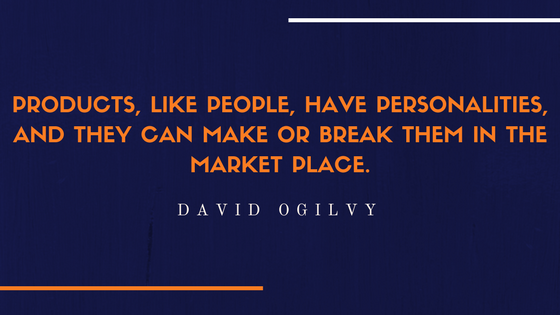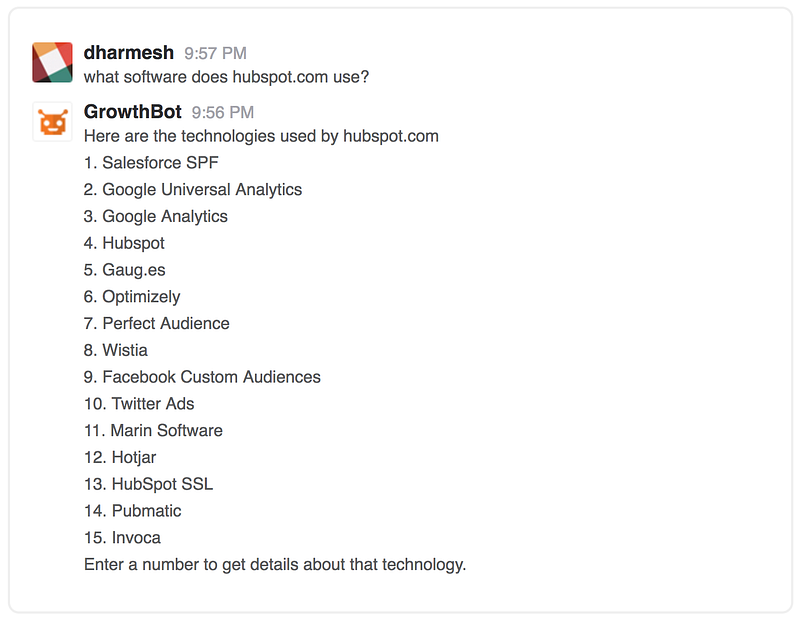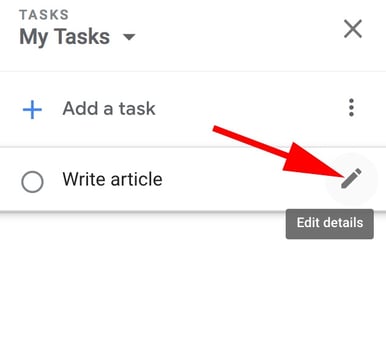It’s not impossible for humans and even a lot of software to do exactly what chatbots do.
It’s how bots do it that matters.
When we work alongside bots, they make life easier. They help us do things faster and with more efficiency. They give us more time to do “human stuff” — and do it even better.
Bots don’t have to be as ubiquitous as searching the web. That’s not the point.
Bots do have to carve out a space as a different but equal resource that takes humans where they want to go more easily than ever before.
Chatbots can and will change business and marketing as we know it, if given a fighting chance.
But right now, they must win over naysayers crying “trend!” and comparing the budding technology to channels that have had decades to develop.
It’s easy to get wrong. And when we do get it right, it’s all too easy to run it utterly into the ground as we have with many marketing opportunities in the past.
This time around, we’ve pledged to use this powerful element of change for good instead of evil.
Here’s how we’re making a sales, marketing, and biz-building chatbot that doesn’t suck: GrowthBot.
Apps build a silo, bots fill a niche.
Source
Apple’s “There’s an app for that” has been the rallying cry for the past decade.
As such, it’s left the tech battlefield littered with millions of apps that do everything from letting you solve crime with your favorite celebrity avatar to ordering delivery with an emoji (OK, that one is kind of useful).
There’s more than just an app for that; there’s a name for that. It’s called app fatigue.
In 2016, comScore found almost half of all smartphone users in the U.S. downloaded a whopping average of zero apps per month. Yet in 2017, the Google Play store added more than 1,300 apps every single day.
Credit
Why so many apps? Mostly because it’s what everyone else is doing. Marketers aren’t exactly known for having a lot of chill when it comes to the tech du jour.
That’s not to say apps are dead in the water, but we are starting to see a trend which indicates people are using far fewer apps than are being put on the market daily.
App Annie’s 2017 research shows people use the same nine apps per day and no more than 30 over the course of a month. On average, users only touch as few as one-third of the apps they’ve downloaded.
Millennials especially are using utilities like maps and search engines along with apps for social networking, messaging, entertainment, and retail.
Source
When users do open an app, it’s no surprise it’s rarely that one that lets you drink beer … without the beer.
Bots don’t add to the onslaught of app, decision, or fake beer fatigue. Instead, they live right inside and actually enhance the functionality of some of the most popular messaging apps.
For example, GrowthBot helps users access tons of marketing and sales data using an app they probably already have open all day — Slack.
We have to agree with data scientist and software developer P. Daniel Tyreusin this case:
“I’m willing to speculate that it’s easier to acquire a user if the user doesn’t have to download a new app to use a service. I’m also willing to speculate that users are more likely to continue using a service that’s integrated into an app they already use.”
In the words of Seth Godin: If your target audience isn’t listening, it’s not their fault — it’s yours.
Before we even began building our chatbot, we focused on exactly how it would create value in a way no other tool could for our audience.
We work consistently to grow GrowthBot’s natural language processing (NLP) skills because we know our audience and we know how much easier it makes their lives when they’re able to access and compare tons of data by typing a few quick phrases into Slack.
NLP enables chatbots to understand what a user is looking for. It also allows consumers to enjoy personalized conversation instead of interacting with the same tired “intuitive” menu in a vacuum.
That’s important when your bot functions as a customer service rep, personal shopper, or research partner and conversation is the ideal way to answer a request.
Dennis Thomas, CTO at AI-powered consulting firm NeuraFlash, knows the importance of understanding how users interact with your chatbot.
“Another place where NLP is a big win is when the bot’s objective is focused on helping users with the discovery phase of products or shopping. Finding the right item via conversation helps to drive the user’s goal, as well as the product criteria to match to the company’s inventory.”
By the same token, NLP could actually be a detriment in cases where text-based chatbots can make the process simpler.
“When you have a visual medium and buttons can accomplish the task in a couple clicks (think easy re-order), open-ended natural language is not making the user’s life easier.”
We didn’t throw everything we’ve learned about our audience out the window when developing new bot software. Instead we implemented that knowledge to make GrowthBot just useful enough without being overwhelming.
We believe chatbots should be useful first and useful always.
NLP only accounts for half the conversation — the input part.
Output is just as important in terms of usefulness.
Your bot might have the personality of The Most Interesting Man in the World, but it will still suck if it can’t answer a user’s query.
You don’t need to build an entire search engine from scratch. You don’t even need to build an app. All you have to do is make sure your chatbot has access to enough data to prove useful in the niche you’ve chosen.
If it can’t do that, it’s no better than the aforementioned beer-simulating apps of the world.
GrowthBot has solid conversational skills, but it would be nothing without the marketing and sales data that help it achieve its goal — providing value to people who are growing businesses.
There are already tons of pieces of software and far too many apps for sales and marketing professionals. Useful chatbots don’t mimic, they empower users to find exactly what they’re looking for using a natural instinct: Simply asking.
Not spending hours customizing dashboards and poking through tens of different workflows just to uncover their own data. Simply asking.
Everytime we link a new database to GrowthBot, it gets more valuable for users. Right now it can pull information from dozens of sources; including HubSpot (of course), Google Analytics, MailChimp, social networking sites, and so on.
Bots are first and foremost data scanning machines. They take input, provide relevant feedback, and do so in a way that is easier to manage than any other platform.
“Products, like people, have personalities…”
David Ogilvy famously understood the importance of personality in products. We believe that’s also the case for brands and bots. That’s why we made GrowthBot sound like someone we know and like.
If your brand already has a solid personality, translate that into the voice and tone your bot uses when interacting with people.
If not, there’s no time like building a chatbot to determine whom you want to be in the online world.
Because there are so many tools out there that take the technical aspect out of building a bot, creating a great conversational flow might just be the greatest challenge you’ll face.
The messaging framework you build into your chatbot will influence the way people perceive the value of your brand, so give it some personality.
MailChimp is famous for its distinctly helpful personality that manages to be playful and humble at the same time. If your cat is wearing its very own monkey-themed knit hat right now, you know exactly what I mean.
Source
Cintell’s 2016 benchmark study on B2B buyers found that companies who exceed lead and revenue goals are two and a half times as likely to use personas than companies who miss lead and revenue goals.
Source
Today’s consumers have nearly countless brands to choose from. And they know it.
A well-defined voice that aligns with your ideal customer is an effective and low-cost way to develop return buyers and bot users.
For example, GrowthBot sounds like Dharmesh Shah — founder and CTO at HubSpot and loving father to the chatbot itself.
That means it’s light-hearted, respectful, and just a tad quirky all while being truly helpful.
We’ve found that a truly helpful voice in a world of chatter is more powerful than you might think.
Bots make life so simple, search feels painful
Google search has made an impact. There’s no denying that.
It’s almost a force of habit to visit a search engine to find what you’re looking for. Habits are notoriously hard to change, especially the more gratifying and automatic they are.
Current studies show it takes an average of 66 days for a behavior to become “unchangingly automatic.”
Because search behavior is second nature to us now, bots must do what a search can’t:
- Provide customer service conversations and solutions without the wait
- Deliver the information a user is looking for in just seconds, on the first try
- Make recommendations based on powerful personalization
- Aggregate information from a variety of sources right inside the apps we’re already using
That last point is what GrowthBot is founded on. We make growing your business easier by using the power of a chatbot to put information at your fingertips — not siloed in more apps and interfaces than you can count.
That’s just the tip of the iceberg of what AI-enabled bots can do with enough data and well-planned conversational flow.
But things can still go wrong if you aren’t aware of and managing your users’ expectations.
Where Facebook’s Assistant M Got It All Wrong
RIP
Chatbots are relatively new and their capabilities are varied. If you want people to love your bot, it’s important they understand why they need it and how to use it.
It’s not that Facebook’s Assistant M chatbot didn’t work. It’s that expectations weren’t managed; which overwhelmed the system and underwhelmed its users all at once.
“The first thing chatbots should do is quickly introduce their core competencies. Not only should chatbots start within a specific scope, they should always firstly tell you how they can help you and what they can do best.”
— Instabot
Clarify upfront exactly what your bot is capable of. Provide specific examples and invite the user to try out a few practice questions. Don’t make them learn any new tricks right away.
Using your chatbot for the first time should feel like starting an online chat with a new friend or customer service agent.
There will inevitably be times when users ask your bot to do something it can’t do yet. Offer them an alternative, but don’t let that learning opportunity slip away.
Scan your chat logs regularly, they’re the most valuable market research you’ll ever get on what people want your chatbot to do.
Wait, have I mentioned value already?
Be on the lookout for every chance you can find to provide extreme value to your users.
Go above and beyond what people expect your chatbot to provide. Delight them with thoughtful little extras that make their days better.
Extreme value doesn’t have to stop when a user leaves your bot interface.
Offer to send customers an alert when their size is back in stock. Tell readers where they can find more articles like the one they just read on your website. Or, like us, celebrate with them every time you connect another tool that will make their jobs easier.
These kinds of interactions don’t just provide extreme value, they keep you top of mind and keep your customers coming back for more.
Nobody needs another app for this, that, or anything.
Instead, people need smart ways to accomplish more within the tools they already know and use regularly. When our chatbots deliver that level of service, we’re sure to start changing behavior and creating better automatic habits.
Fight back against bad bots. Build yours to be delightful to interact with, provide extreme value, and just not suck.
Originally published at blog.growthbot.org.

from Marketing https://blog.hubspot.com/marketing/how-we-got-105k-people-using-our-chatbot





















